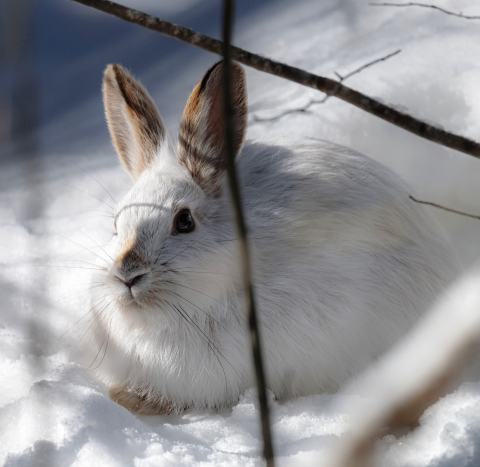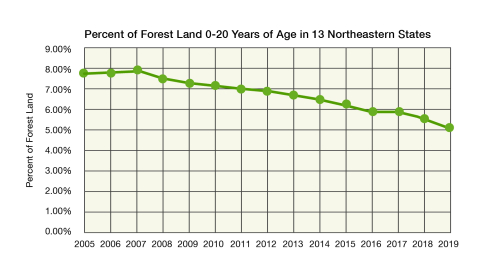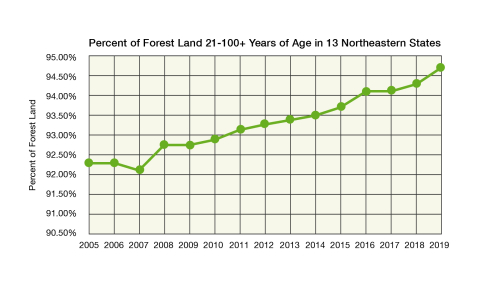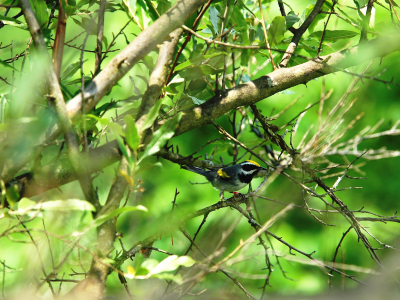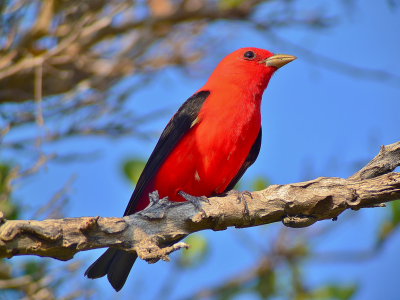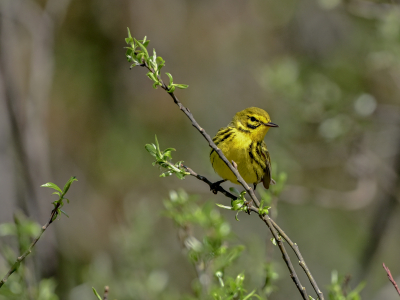Young forest is a light-filled place rich with small trees, shrubs, grasses, and wildflowers. Thick, tangled, and less than 20 feet tall, young forest offers abundant, diverse food for many kinds of wild animals, along with cover where they can hide and raise their young.
Scientists sometimes refer to young forest and shrubland as “early successional habitat.” You might call it “in-between habitat,” since it’s not open grassland and it hasn’t become older woodland yet.
With Less Young Forest Now Than in the Past . . .
Up to 15 percent of woods in the Northeast may have been young forest before humans began preventing natural disturbances from setting back the age of wooded tracts.
Today, as our forests become increasingly and uniformly middle-aged, only about 5 percent of woods in the Mid-Atlantic region and 2 percent in New England are considered "young," less than 20 years of age.
Wildlife Populations are Falling
As the amount of young forest and shrubland has dwindled, the populations of many kinds of wildlife have fallen: Reptiles like wood turtles and green snakes. Birds such as whip-poor-wills, woodcock, and brown thrashers. Mammals like short-tailed weasels, snowshoe hares, and New England cottontail rabbits.
State wildlife agencies from Maine to Virginia list more than 60 kinds of wildlife that need young forest and shrubland as “Species of Greatest Conservation Need” in their State Wildlife Action Plans. Other animals that live in older woods also depend on the abundant food and cover found in young forest and shrubland at different times of the year and during different stages of their lives.
Let's Work with Nature
Landowners and conservationists can learn how to work with nature and create young forest and shrubland by reading the nontechnical Young Forest Guide. Approaches include preserving old fields, cutting or burning overmature and spindly shrubs so they grow back more thickly, removing invasive shrubs and planting native species, and conducting timber harvests in carefully selected places.
Many of these techniques mimic natural disturbances that spur new growth, attracting and supporting a wide range of wildlife.
Want to Make Some Habitat?
To learn more about creating young forest or shrubland, check out The Young Forest Project brochure. Then contact your state's wildlife agency (hint: ask about Private Landowner Assistance Programs; some states offer a free consultation with a biologist), the Partners for Fish and Wildlife Program with the U.S. Fish and Wildlife Service, the USDA Natural Resources Conservation Service (NRCS), or a certified forester. For some projects, full or partial funding may be available.
Find contacts on the About page.

